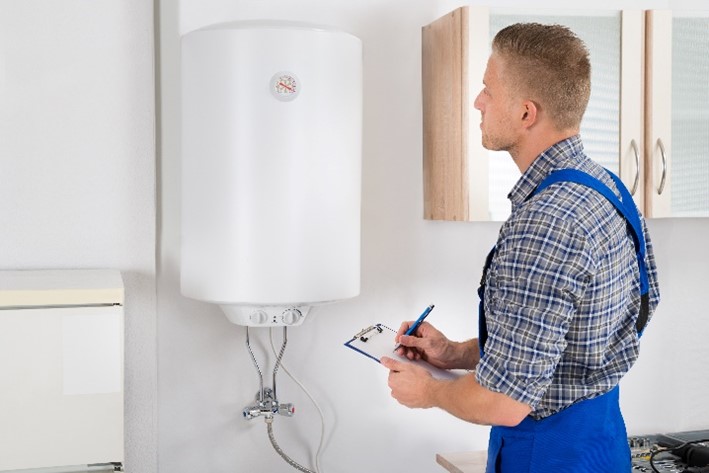What're your opinions about Tips on Maintaining a Water Heater?

Hot water is necessary for day-to-day comfort, whether it's for a refreshing shower or cleaning meals. To guarantee your warm water system runs effectively and lasts much longer, regular upkeep is vital. This article supplies practical suggestions and understandings on how to preserve your home's warm water system to avoid disruptions and costly repair work.
Intro
Keeping your home's hot water system may appear overwhelming, but with a couple of basic actions, you can guarantee it runs smoothly for years to come. This guide covers whatever from comprehending your hot water system to DIY maintenance pointers and recognizing when to call professional assistance.
Significance of Maintaining Your Warm Water System
Normal upkeep not just expands the life-span of your hot water system but also ensures it runs successfully. Overlooking maintenance can result in decreased efficiency, higher power expenses, and even premature failure of the system.
Signs Your Hot Water System Needs Maintenance
Understanding when your hot water system needs interest can avoid significant problems. Look out for indicators such as irregular water temperature, unusual noises from the heating system, or corroded water.
Comprehending Your Warm Water System
Before diving into maintenance jobs, it's practical to comprehend the basic components of your hot water system. Commonly, this consists of the water heater itself, pipes, anode poles, and temperature level controls.
Regular Monthly Maintenance Tasks
Normal regular monthly checks can help capture minor issues prior to they intensify.
Flushing the Hot Water Heater
Flushing your water heater eliminates debris accumulation, enhancing effectiveness and prolonging its life.
Checking and Changing Anode Rods
Anode poles stop corrosion inside the container. Inspecting and replacing them when worn out is critical.
Checking and Adjusting Temperature Level Settings
Readjusting the temperature setups ensures optimum efficiency and security.
DIY Tips for Upkeep
You can execute a number of maintenance tasks yourself to maintain your warm water system in top condition.
Looking for Leaks
Routinely examine pipelines and connections for leakages, as these can result in water damages and higher costs.
Checking Pressure Alleviation Valves
Testing the pressure safety valve ensures it works correctly and stops excessive pressure build-up.
Shielding Pipes
Protecting warm water pipes minimizes heat loss and can conserve power.
When to Call an Expert
While do it yourself upkeep is beneficial, some issues call for professional competence.
Facility Issues Needing Specialist Help
Instances include significant leaks, electrical issues, or if your hot water heater is regularly underperforming.
Regular Specialist Maintenance Perks
Professional upkeep can consist of comprehensive evaluations, tune-ups, and guaranteeing compliance with security criteria.
Conclusion
Normal maintenance of your home's hot water system is necessary for performance, longevity, and expense financial savings. By adhering to these suggestions and understanding when to seek expert assistance, you can make certain a reliable supply of warm water without unanticipated disturbances.
How to Maintain an Instant Hot Water Heater
Before tinkering with your hot water heater, make sure that it’s not powered on. You also have to turn off the main circuit breaker and shut off the main gas line to prevent accidents. Also turn off the water valves connected to your unit to prevent water from flowing into and out of the appliance. 2. When you’re done, you have to detach the purge valves’ caps. These look like the letter “T” and are situated on either side of the water valves. Doing so will release any pressure that has accumulated inside the valves while at the same time avoid hot water from shooting out and burning your skin. 3. When the purge valves’ caps are removed, you have to connect your hosing lines to the valves. Your unit should have come with three hoses but if it didn’t, you can purchase these things from any hardware or home repair shops. You can also get them from retail stores that sell water heating systems. Read the user’s manual and follow it to complete this task properly. When the hosing lines are connected, open the purge port’s valves. 4. You should never use harsh chemical cleaners or solutions when cleaning your unit. Make use of white vinegar instead. It should be undiluted and you’ll probably use about 2 gallons. 5. Now flush your water heater. This task should probably take about 40 minutes. We can’t give you specific directions for this because the procedure is carried out depending on the type, model and brand of your heater. With that being said, refer to the user’s manual. 6. When you’re done draining the unit, you have to turn off the purge port valves again. Remove the hosing lines that you earlier installed on each of the water valves. Put the valve caps (purge port) back in their respective places and be very careful so as not to damage the rubber discs that are found inside these caps. 7. Now that everything’s back in place, check your user’s manual again to find out how to reactivate your water heating system. 8. Once it is working, turn one of your hot water faucets on just to let air pass through the heater’s water supply pipes. Leave the tap on until water flows smoothly out of it. https://www.orrplumbing.com/blog/2014/september/how-to-maintain-an-instant-hot-water-heater/

We are very interested in How to Maintain Your Water Heater & Prolong its Life and I really hope you liked the article. Do you know about somebody who is sincerely interested in the subject? Be sure promote it. We cherish your readership.
Recurring Service Plans